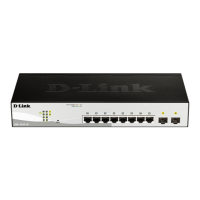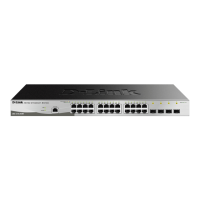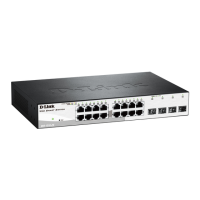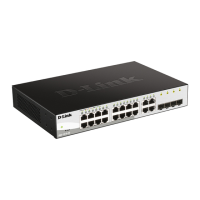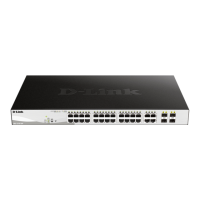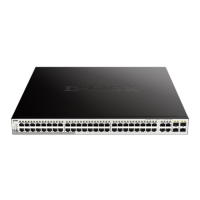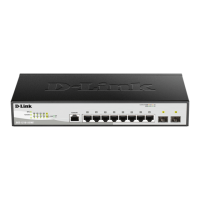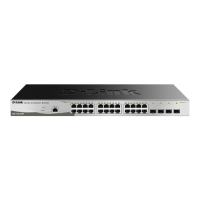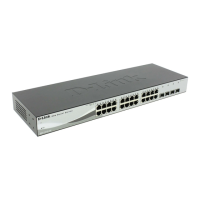5 Configuration D-Link Web Smart Switch User Manual
PCs 1, 2, and 3 cannot communicate with each other; but all of them need to access the servers or the
Internet behind the firewall.
PC 1 (Port 2, V2)
Firewall, V1~V4
PC 2 (Port 3, V3)
PC 3 (Port 4, V4) Server, V1~V4
Figure 52 – Configuration > 802.1Q VLAN > Asymmetric VLAN Example
1. Enable Asymmetric VLAN
Enable Asymmetric VLAN and click the Apply button. The overlapping VLAN cannot be configured
unless this function is enabled..
Figure 53 – Configuration > 802.1Q VLAN > Asymmetric VLAN - Enabling Asymmetric VLAN
2. Configure the shared VLAN (VLAN 1) and access VLANs (VLAN 2, 3, 4)
In this case, the default VLAN is used as shared VLAN, and the ports that are shared in the network
are:
Port 9 is connected to the server
Port 10 is connected to the firewall
The group of shared ports needs to be included for all the VLANs. Ports 9, 10 already belong to
VLAN 1, therefore no changes are needed.
VLAN 2 is configured to include ports 9, 10 (shared VLAN ports) and the set of ports to be separated
from the other VLANs (for example, port 2). VLAN 3 and 4 are then configured to include shared
ports and the set of ports to be separated from the other VLANs (for example, port 3 and 4
respectively). Therefore we have three VLANs that share some common ports, but their original
membership ports are still separated from each other (for example, port 2, 3, and 4).
The VLAN settings of this example are:
VLAN 1: default VLAN 1, including all ports with untagged.
VLAN 2: Member ports are untagged port 2, 9, 10.
VLAN 3: Member ports are untagged port 3, 9, 10.
VLAN 4: Member ports are untagged port 4, 9, 10.
32
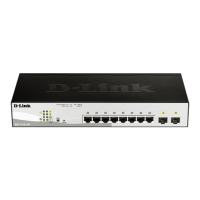
